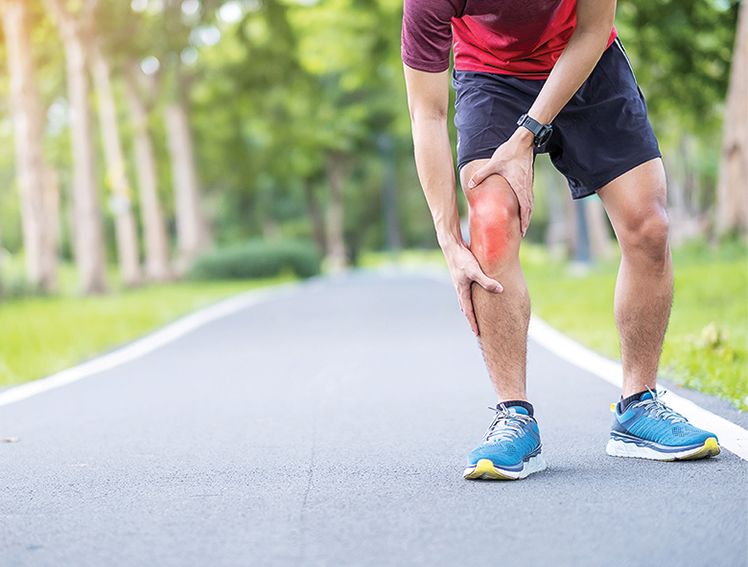
Why Early Osteoarthritis Diagnosis is Key to Joint Health?
Introduction
Joint pain and stiffness can often result from ageing or a sedentary lifestyle, but these symptoms might be an early warning of something more serious osteoarthritis. Known as the most common type of arthritis, osteoarthritis can limit mobility and reduce quality of life if left unmanaged. The good news is that early diagnosis can make a huge difference in slowing its progression and improving your everyday life.
This blog will explore how recognizing osteoarthritis early can help manage symptoms effectively, prevent complications, and also allow you to lead a healthier and more active life.
Overview of Osteoarthritis
What is Osteoarthritis? [1]
Osteoarthritis is a chronic condition in which the cartilage that cushions your joints begins to deteriorate. Without this protective layer, bones can rub together, causing pain, stiffness, and swelling. Over time, the joint may lose its usual shape, making it difficult to perform basic movements such as walking or climbing stairs.
Osteoarthritis typically affects weight-bearing joints like the knees, hips, and spine but can also other areas. While it’s more common among older adults, younger people can also develop it due to injury, obesity, or genetic predisposition.
Importance of Early Diagnosis [2]
Detecting osteoarthritis early is crucial because the condition worsens over time. Early diagnosis means you can take steps to slow it down, reduce pain, and keep your joints healthy. Without early care, the damage to your joints can become severe, making everyday activities harder and lowering your overall quality of life.
The earlier you recognize the signs and seek help; the more options you have to manage the condition effectively.
Osteoarthritis and Its Early Symptoms
Early Symptoms to Watch For
Recognizing the early signs of osteoarthritis can help you take action before the condition worsens. Here are some symptoms to look out for:[3]
Joint Stiffness: Feeling stiffness, especially in the morning or after periods of inactivity.
Pain in Joints: Aching or sharp pain in the joints during or after movement.
Swelling: Mild swelling or inflammation around the affected joints.
Reduced Range of Motion: Difficulty bending, straightening, or rotating joints as freely as before.
Joint Clicking or Cracking: Hearing noises when you move the joint.
If you notice any of these symptoms persisting, it’s a good idea to consult a healthcare professional.
Benefits of Early Osteoarthritis Diagnosis
An early diagnosis offers many benefits that can positively impact your life.[4]
Pain Management: Early detection allows you to address joint pain effectively, preventing it from becoming unbearable.
Improved Mobility: By taking steps to manage osteoarthritis early, you can maintain better joint function and movement.
Delay in Disease Progression: Treatments and lifestyle changes can slow the wear and tear on your joints.
Better Quality of Life: With fewer symptoms, you can continue to participate in your daily activities without restrictions.
Avoiding Surgery: Early intervention may reduce the need for more invasive treatments like joint replacement surgeries later.
Key Diagnostic Methods for Early Detection
Doctors use a combination of methods to diagnose osteoarthritis early.[5] These include:
Physical Examination: Checking for joint swelling, tenderness, and range of motion.
Imaging Tests: X-rays and MRIs can show changes in joint structure and cartilage damage.
Blood Tests: While these don’t directly diagnose osteoarthritis, they help rule out other conditions like rheumatoid arthritis.
These tools enable healthcare providers to catch the condition in its early stages and recommend appropriate treatments.
Proactive Steps Following Early Diagnosis
If you’ve been diagnosed with osteoarthritis, don’t lose hope. There are proactive steps you can take to manage the condition and improve your well-being:[5]
Stay Physically Active: Walking, swimming, and yoga are all low-impact workouts that can help to strengthen the muscles surrounding your joints and relieve stiffness.
Maintain a Healthy Weight: Excess weight puts additional strain on your joints, particularly the knees and hips. Losing even a small amount of weight can make a big difference.
Follow a Balanced Diet: Include meals high in calcium, vitamin D, and omega-3 fatty acids to help with joint health.
Use Joint Supports: Knee braces or walking aids can help reduce strain on affected joints.
Follow Medical Advice: You should follow the treatment plan recommended by your doctor, including medications or physical therapy if prescribed.
Long-Term Benefits of Early Management
The advantages of addressing osteoarthritis early go beyond immediate symptom relief. Long-term benefits include:
Reduced Risk of Complications: Early care can prevent joint deformities and other complications associated with advanced osteoarthritis.
Enhanced Joint Health: Regular care and monitoring can preserve the cartilage and surrounding structures.
More Independence: Staying active and mobile allows you to maintain your independence and quality of life as you age.
When to See a Doctor for Osteoarthritis Symptoms
Don’t wait for the pain or stiffness to worsen before seeking medical help. Visit a doctor if you notice:
Persistent joint pain that doesn’t improve with rest.
Swelling or warmth around the joint.
Difficulty performing daily activities due to joint discomfort.
Misso Robotic System by Meril
The Misso Robotic System by Meril is a cutting-edge tool designed to make joint replacement surgeries more precise and personalized. Using advanced robotic technology and detailed 3D imaging, it helps surgeons plan and perform procedures with unmatched accuracy. This system ensures better implant placement, reduces complications, and supports faster recovery, making it a valuable option for patients looking to regain mobility and improve their quality of life.
Opulent by Meril
The Opulent Total Knee Replacement Implant by Meril is designed to restore natural knee movement and enhance comfort for patients undergoing knee replacement surgery. With a focus on durability and precision, this implant helps improve joint function and quality of life. Its advanced design aims to reduce wear and tear, offering long-term support for those seeking relief from knee pain and mobility challenges.
Conclusion
Osteoarthritis may be a lifelong condition, but early diagnosis and management can make a significant difference. By recognizing the symptoms early and taking proactive steps, you can slow its progression, reduce pain, and improve your quality of life.
References
[1] https://www.niams.nih.gov/health-topics/osteoarthritis/diagnosis-treatment-and-steps-to-take
[2] https://pmc.ncbi.nlm.nih.gov/articles/PMC4251520/
[3] https://www.mayoclinic.org/diseases-conditions/osteoarthritis/symptoms-causes/syc-20351925
[4] https://www.who.int/news-room/fact-sheets/detail/osteoarthritis
[5] https://www.niams.nih.gov/health-topics/osteoarthritis/basics/diagnosis-treatment-and-steps-to-take



